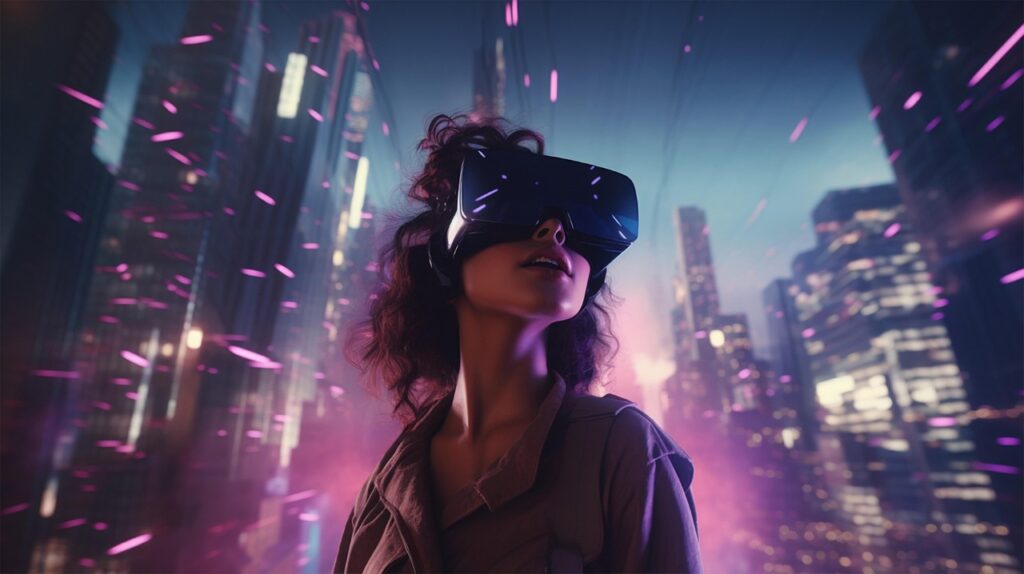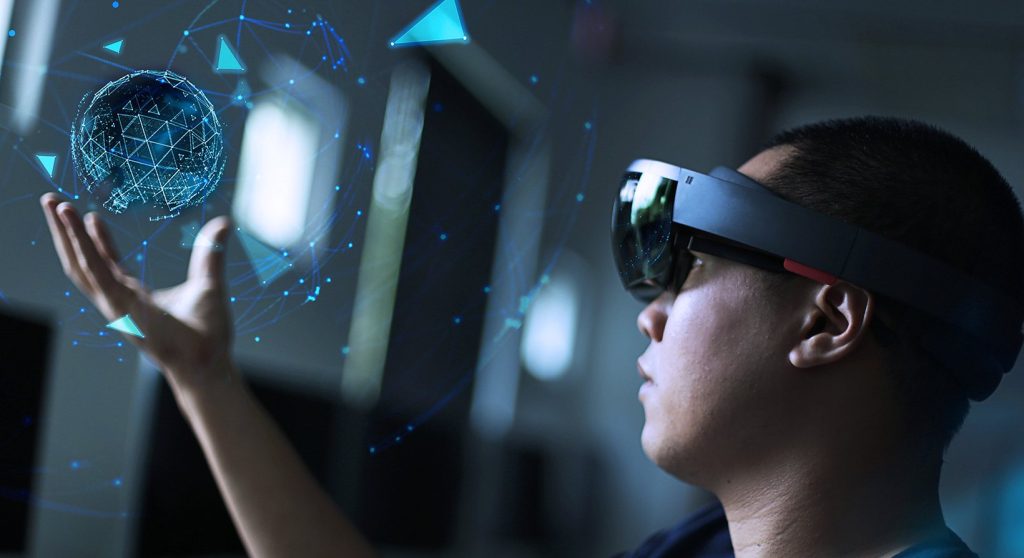The luxury fashion industry is undergoing a significant transformation, driven by shifts in consumer behavior and the rise of immersive digital technology. Younger luxury consumers, particularly Gen Z and affluent millennials, seek brands that offer not only craftsmanship and exclusivity but also meaningful digital experiences.
AI and XR for luxury fashion brands unlock new ways to enhance storytelling, personalize customer journeys, and create emotional engagement without compromising heritage. According to a recent study, the luxury sector grew at a compound annual growth rate of about 5% between 2019 and 2023. Meanwhile, a systematic review indicates that integrating generative AI with metaverse/XR environments could “profoundly revolutionize” the fashion sector.
The Digital Evolution of Luxury
Traditionally, luxury fashion defined itself through exclusivity, handcrafted quality, and private showings. However, luxury consumers in 2025 expect digital interaction to complement, rather than replace, exclusivity. According to Bain & Company, the global luxury market reached €1.51 trillion in 2023, showing steady growth primarily driven by younger, digitally fluent consumers.
This new audience expects seamless digital engagement, but without compromising craftsmanship or brand legacy. This is where AI and XR for luxury fashion brands provide value: they enable brands to tell more nuanced stories, offer access selectively, and create emotional resonance across both physical and digital touchpoints.
1. The Power of Storytelling in Luxury
Storytelling has always been at the heart of the identity of luxury fashion brands. Origin stories, ateliers, craftspeople, and design philosophies shape emotional loyalty. Yet, traditional media (runway shows, lookbooks, static campaigns) no longer fully engage digital-native luxury consumers. Immersive experiences allow brands to transform their narratives into living, interactive journeys.
2. Heritage and Innovation Through Immersive Narratives
XR for luxury fashion brands enables the preservation and celebration of heritage in new forms. Virtual brand timelines, spatial showrooms, and generative design installations bring the brand’s legacy to life in interactive environments that evoke emotion and curiosity. These experiences do not replace physical luxury; they enhance it, aligning with consumer desires for deeper cultural meaning. For example, the Bentley XR experience illustrates how heritage can adapt to immersive digital environments without compromising its prestige.
3. Virtual Brand Archives
A virtual brand archive allows clients and collectors to explore decades of craftsmanship in a 3D spatial space. Imagine stepping inside a Parisian atelier recreation, viewing iconic runway looks at scale, or examining embroidery details with micro-level fidelity. These archives strengthen customer intimacy by showcasing heritage in a way that is private, emotional, and visually rich. Experiments from fashion museums and houses suggest that virtual archives significantly increase engagement time and repeat visits.
The Main AI and XR Solutions for Luxury Fashion Brands
Several digital products have been made available by Digital Transformation through AI and XR to help luxury fashion brands resonate more with their audience. Among the most effective, we can find:
1.  AI Personalization at Scale
AI Personalization at Scale
AI analyzes vast datasets, customer preferences, shopping behaviors, and social trends to deliver tailored product recommendations and marketing messages. This precision enables luxury brands to transition from mass communication to intimate dialogue.
2.  AI-Powered Virtual Assistants and Metahumans
AI-Powered Virtual Assistants and Metahumans
Digital avatars enhanced with AI can interact with customers in real time, offering personalized styling advice, product information, and 24/7 support. These AI Avatars create a blend of luxury concierge service and innovative technology to assist customers in every step of the purchase process.
3.  Generative AI in Fashion Design
Generative AI in Fashion Design
Beyond marketing, AI supports creativity. Generative design tools help fashion houses experiment with new designs inspired by historical patterns and predictive trends. This fusion of human artistry and AI innovation results in exclusive, avant-garde collections.
4.  Virtual Runways and Showrooms
Virtual Runways and Showrooms
Luxury brands now host virtual runway shows that are accessible worldwide, expanding their reach while preserving exclusivity. Virtual showrooms enable consumers to explore collections in 3D environments, providing unprecedented access and engagement.
5.  Augmented Reality in Retail
Augmented Reality in Retail
AR tools enable customers to try on accessories, makeup, or entire outfits virtually via smartphones or smart glasses. This reduces friction in the buying process and boosts confidence in online purchases, leading to higher conversion rates and fewer returns.
6.  AR Merchandise and Packaging
AR Merchandise and Packaging
Physical items, such as business cards, tags, or packaging, embedded with AR triggers transform into interactive storytelling tools. A luxury handbag’s tag could unlock an animated feature showcasing craftsmanship or care instructions.

Core AI and XR Applications for Luxury Fashion Brands
Here is a practical table, suitable for use in a marketing or product‑strategy doc by luxury fashion brands, about applications of AI and XR for luxury:
Solution | What it does | Why it matters for luxury |
AI hyper‑personalisation | Uses purchase history, visual preferences, and behavioural signals to recommend curated looks. | McKinsey reports that personalization can increase customer lifetime value by 20–30% when applied strategically. |
AI‑powered metahumans (virtual concierges) | Real‑time branded avatars that offer style advice and booking services. | 24/7 access with the tone and discretion of a private stylist. |
Generative AI design tools | Produces variations based on heritage motifs for limited‑edition drops. | Speeds prototype cycles while enabling scarcity‑driven releases. |
AR try‑ons & WebAR | Browser‑based try‑on experiences need no app download. | Reduces returns and increases confidence for high‑ticket items. |
Virtual runways & spatial showrooms | Immersive, invite‑only runway or showroom experiences in VR or spatial devices. | Global reach while preserving exclusivity of the guest list. |
AR merchandising & packaging | Physical tags that unlock storytelling, after‑care guides or data capture. | Extends the brand moment post‑purchase and enables consented data capture. |
Business Outcomes: Engagement, Revenue, and Sustainability
When implemented strategically, AI for luxury fashion brands and XR for luxury fashion brands yield measurable business outcomes for luxury fashion brands:
- Deeper engagement & higher CLTV: Immersive experiences produce emotional resonance—the same factor that drives repeat purchases and advocacy in luxury. According to research, younger consumers increasingly view luxury as an experience rather than a mere possession.
- Smarter marketing & conversion lift: AI‑driven personalisation improves message relevance and reduces friction in funnel stages. The data generated from XR interactions (dwell time, micro‑interactions, favourites) enables more effective CRM segmentation and higher average order value.
- Reduced waste and sustainable prototyping: Virtual fitting rooms and digital samples reduce the need for physical sample production, aligning with the growing sustainability expectations of luxury consumers. Literature on AI & XR in luxury retail highlights this advantage.
Thus, AI and XR for luxury enable luxury fashion brands to transition from product-centric models to platform-enhanced experience models, improving engagement, operational efficiency, and brand positioning.
Practical Launch Roadmap for Marketing & Innovation Teams
Here’s a step‑by‑step roadmap for marketing and innovation teams in luxury fashion brands looking to deploy AI and XR for luxury:
- Audit brand DNA & data infrastructure: Identify core heritage assets (archives, artisan profiles, flagship designs) and assess the maturity of customer data and privacy frameworks.
- Map core heritage assets: Catalog archives, artisan storylines, and flagship design codes to feed immersive experiences and AI models.
- Assess customer data availability and privacy guardrails: Evaluate segmentation readiness, consent flows, first‑party identifiers, and infrastructure to support personalisation at scale.
- Start with a high‑impact pilot: Select a single use case (e.g., AR try‑on or virtual showroom) tied to a calendar moment—such as a collection launch, flagship event, or private client activation.
- Design for exclusivity & opt‑in data capture: Use invitation codes, token‑gated access, or member‑only experiences to preserve the premium feel while collecting consented insights.
- Measure beyond clicks: Define KPIs such as session dwell time, repeat visits, bookings for private appointments, and downstream purchase lift compared to control groups.
- Scale with governance: Establish clear data ethics, intellectual‑property controls, and a modular technology stack so that new devices or platforms can be integrated without massive re‑platforming.
Where Brands Are Experimenting Now
Here are real‑world examples of how luxury fashion brands are experimenting with AI and XR for luxury:
- Zegna: the luxury menswear brand partnered with Microsoft to deploy AI‑powered clienteling via the “Zegna X” outreach app. The system recommends outfits and digital engagements, reportedly generating 75% higher spend per client using the service.
- Academic research indicates that fashion brands such as Gucci, Balenciaga, and others are using XR and metaverse platforms to create virtual fashion shows, avatar‑based consumption, and NFT collaborations, anticipating that by 2030 the metaverse could account for 5‑10% of the market value of fashion and luxury goods.
These cases demonstrate that AI and XR are not just experiments for luxury fashion brands; they’re strategic initiatives designed to reach digital-first luxury audiences.
Common Challenges And How to Mitigate Them
While AI and XR for luxury fashion brands offer exciting opportunities, there are key challenges to navigate:
- Data maturity & privacy: Many luxury organisations underestimate the engineering needed for effective personalisation. Begin with consent‑first design, minimise PII, use device‑or hashed identifiers, and build with privacy by design.
- Maintaining brand authenticity: The aesthetic tone, brand voice, and craftsmanship must be embedded into AI models and XR user experiences. To avoid a generic digital feel, brands should use curated training assets (archive photography, artisan interviews, tone guidelines).
- Technology fragmentation: The XR hardware and platform landscape is diversifying. Brands should prioritise platform‑agnostic pipelines (e.g., GLTF 3D assets, WebAR fallback) so experience assets are reusable across native headsets and web.
- Balancing exclusivity with scale: Digital experiences must still feel premium, not mass‑market. Utilize gated access, private streaming rooms, invite-only VR salons, and token-gated activations to maintain a luxurious feel while scaling globally.
Privacy, Ethics, and the Luxury Promise
Customers of luxury fashion brands expect discretion and trustworthy relationships. Any solution in AI for luxury fashion brands or XR for luxury fashion brands must prioritise ethics and privacy:
- Transparent consent flows and clear data‑use statements: Clients must understand what data is collected and how it’s used in personalised or immersive experiences.
- Strong security for client data and transactional events: Luxury brands must treat digital interactions with the same gravity as in‑boutique exchanges.
- Minimal third-party tracking (preference for first-party analytics and ephemeral session data): This aligns with premium-service expectations and fosters long-term trust rather than short-term metrics.
KPIs That Matter for Marketing & Innovation Teams
When evaluating AI and XR for luxury fashion brands, marketing and innovation teams must avoid vanity metrics and focus on what truly drives value:
- Engagement quality: track session dwell time, number of repeat visits to the immersive experience, and micro‑interactions rather than clicks.
- Commercial lift: compare conversion rates for users who engage with XR/AI experiences vs control groups.
- Retention / CLTV: measure changes in repeat‑purchase frequency and lifetime value among cohorts exposed to the experience.
- Operational savings: quantify reductions in physical sample production, event‑cost deltas between virtual and physical activation, and return‑rate reduction through virtual try‑ons.
- Brand equity: measure changes in Net Promoter Score (NPS), sentiment lift or brand‑advocacy scores among experience participants.
Using these KPIs ensures that AI for luxury fashion brands and XR for luxury fashion brands are tied to tangible business outcomes—engagement, revenue, and efficiency—not just novelty.
A Compact Technical Checklist for Product Teams
For product teams building solutions for luxury fashion brands with AI and XR for luxury, here’s a condensed technical checklist:
- Assets: high‑quality 3D models (e.g., GLTF format), photogrammetry of materials, optimized textures for real‑time rendering.
- Pipelines: WebAR entry points with native app or headset fallbacks; modular asset pipelines to allow reuse across platforms.
- AI: lightweight but finely tuned recommendation models; edge inference capability to reduce latency for immersive interactions.
- Analytics: define event taxonomy for XR interactions (e.g., gaze, hold, rotate), integrate with CRM or CDP for a holistic view of customer journey.
- Accessibility: provide alternative access paths for customers without XR‑capable devices (e.g., video walkthroughs, human stylist service) to maintain inclusion.
This checklist ensures that the stack for AI and XR for luxury fashion brands is built for longevity, reuse, and a premium experience.
Future Outlook: What to Plan for in 12-36 Months
Over the next 12 to 36 months, luxury fashion brands investing in AI and XR for luxury should plan for the following trajectories:
- WebXR growth: browser‑based XR will make immersive experiences more accessible without app downloads, expanding reach while preserving brand control.
- Spatial platforms: High-fidelity headsets (such as premium devices) will become playfields for invitation-only activations, private 3D product demonstrations, and luxury digital salons. Brands should plan content pipelines that support both mainstream mobile AR and premium spatial experiences.
- Generative design & metahumans: AI for luxury fashion brands and XR for luxury fashion brands will move from novelty to a normalized toolkit—provided that brands maintain editorial control and curation. Generative AI will deliver $275B+ in productivity and creative acceleration in fashion and luxury.
Elevate Your Luxury Brand with Immersive AI and XR Solutions
The future of luxury fashion is immersive, and the brands that embrace AI and XR today will define the market tomorrow. At YORD, we specialize in crafting tailor-made immersive experiences that perfectly blend heritage with innovation.
We design immersive and intelligent technologies that elevate the fashion experience. We have been recognized by Deloitte and awarded by Clutch as a Top XR Agency worldwide. Our AI and XR solutions have helped over 120 brands worldwide. From AI-powered virtual assistants and generative design tools to breathtaking VR environments, our solutions help luxury brands captivate audiences, deepen engagement, and drive measurable growth.
Don’t let your brand fall behind in the digital revolution. Partner with us to implement immersive technology and transform your luxury customer experience successfully.
Start your immersive journey today: contact us to discover how we can elevate your luxury fashion strategy with the most advanced AI and XR solutions.
👋 Get in touch
By clicking the “send” button, I agree to the collection and processing of my personal data as described in the Privacy Policy.





